Engaging clients effectively and ensuring their attendance for treatment sessions are critical components of successful gambling treatment programs. For instance, a recent study revealed that motivational communication strategies increased initial session attendance rates by over 30%, highlighting the potential of targeted interventions.
Addressing client barriers and fostering trust can create lasting change and pave the way for meaningful progress in therapy. Research consistently highlights that treatment success hinges on the quality of therapy, as well as on fostering client motivation and setting clear expectations.
This article outlines actionable tips for increasing session attendance and client satisfaction, drawing from the latest studies and proven strategies. Whether your clinic specializes in in-person or telehealth services, these tips can help you optimize outcomes for your clients and your practice.
Understand the Barriers to Attendance
Clients seeking help for gambling issues often face multiple barriers to attending sessions. Understanding these barriers is the first step toward mitigating them:
- Stigma and Shame: Many individuals feel embarrassed or ashamed about seeking help. Normalize the process by highlighting that gambling issues are common and that seeking help is a sign of strength, not weakness. Consider incorporating testimonials from former clients to illustrate this.
- Ambivalence About Change: Clients might be unsure if they want to stop gambling. Motivational techniques, such as motivational interviewing, can help them address this ambivalence directly, allowing them to explore their feelings and focus on their long-term goals.
- Logistical Challenges: Transportation, scheduling conflicts, and financial concerns are common hurdles. Proactively addressing these during intake—by offering flexible scheduling, telehealth sessions, and financial assistance—can make treatment more accessible.
- Lack of Knowledge: Clients may not fully understand what treatment entails or may have unrealistic expectations. Providing clear, upfront information about the therapy process can demystify treatment and reduce anxiety.
By identifying these barriers—such as stigma, ambivalence, logistical challenges, and lack of knowledge—providers can tailor their communication and interventions to address specific client concerns. This targeted approach can significantly improve attendance and engagement, paving the way for more effective treatment outcomes.
Leverage Motivational Communication
Motivational communication is a powerful tool for increasing client engagement and attendance. A study published in the Journal of Gambling Studies demonstrated that systems-level interventions—like motivational emails and clear expectations—can boost initial session attendance rates from 49% to 85%.
Tips for Effective Motivational Communication:
- Acknowledge the Difficulty of Seeking Help: Recognize and validate the courage clients must have to seek treatment. A simple acknowledgment, such as “We know this step can be challenging, and we’re here to support you,” can go a long way.
- Highlight the Benefits: Emphasize the potential positive outcomes, such as improved financial stability, stronger relationships, and better mental health. Use specific examples or statistics from past clients to make these benefits tangible.
- Set Clear Expectations: Provide a roadmap of what clients can expect from the treatment process, including session frequency, duration, and likely milestones. This will help clients feel prepared and reduce uncertainty.
- Personalize the Message: Tailor communication to individual client needs and preferences. In correspondence, use client names and reference their specific concerns or goals.
- Use Multiple Channels: Reinforce messages through emails, phone calls, and in-person conversations. Consistent communication across multiple channels ensures your message is heard and remembered.
Implement Flexible Scheduling Options
Flexible scheduling can significantly reduce no-show rates. Telehealth, in particular, has transformed accessibility for clients by eliminating barriers like transportation challenges, time constraints, and geographic limitations. This flexibility allows clients to attend sessions from the comfort of their own homes, making it easier to fit treatment into their busy lives.
Moreover, telehealth reduces the stigma associated with walking into a physical clinic, which can be a deterrent for some individuals seeking help. Offering telehealth sessions alongside in-person appointments allows clients to choose the option that best fits their lifestyle. In the referenced study, attendance rates for telehealth sessions (82%) were nearly as high as for in-person sessions (88%).
How to Enhance Scheduling Flexibility:
- Provide After-Hours Availability: Respond promptly to client inquiries, including those received outside regular business hours. Offering evening or weekend sessions can also make treatment more accessible for working clients.
- Offer Telehealth Services: Make it easy for clients to attend sessions remotely. Ensure your telehealth platform is user-friendly and provides clear instructions for setting it up.
- Accommodate Client Preferences: Clients should be able to choose appointment times that align with their schedules. An online scheduling tool should be incorporated to streamline the process and give clients more control.
Flexible scheduling options show clients that their time and convenience are valued, fostering trust and commitment to the treatment process.
Reduce Financial Barriers
Cost is a significant concern for many clients. Offering affordable payment options or sliding-scale fees can make treatment accessible to a broader audience.
Strategies to Address Financial Concerns:
- Transparent Pricing: During the initial consultation, clearly communicate the cost of treatment and payment options. Transparency builds trust and helps clients plan accordingly.
- Flexible Payment Plans: Work with clients to develop manageable payment schedules. Breaking down costs into smaller, regular payments can make treatment more feasible.
- Pro bono services: If possible, provide free or discounted sessions for clients in need. Partnering with local organizations or applying for grants can help subsidize these services.
- Insurance Assistance: Help clients navigate their insurance options to determine coverage for gambling treatment services.
Reducing financial barriers not only increases attendance but also demonstrates a commitment to making treatment accessible to all who need it.
Create a Welcoming Environment
A positive first impression can significantly increase client retention. From the initial phone call to the first session, every interaction should convey warmth, professionalism, and a commitment to helping clients achieve their goals.
Tips for Building a Welcoming Environment:
- Train Staff on Customer Service: Ensure all team members, from receptionists to therapists, are friendly and empathetic. Staff should be trained to handle sensitive topics with discretion and understanding.
- Streamline Onboarding: To minimize stress for new clients simplify the intake process. Offer online forms and clear instructions to save time and reduce confusion.
- Maintain a Comfortable Space: For in-person sessions, create a clean, inviting environment with comfortable seating and calming decor. For telehealth sessions, ensure a professional, distraction-free backdrop that instills confidence in your services.
- Follow-Up After Initial Contact: After the first interaction, send a follow-up email or call to confirm details and answer any questions. This helps clients feel cared for and valued.
Provide Clear Information About the Treatment Process
Uncertainty can deter clients from continuing treatment. By providing detailed information upfront, you can set realistic expectations and build trust.
Key Information to Share:
- Treatment Goals: Explain the objectives of therapy and how they align with the client’s needs. For example, “Our goal is to help you regain control over your gambling habits and improve your quality of life.”
- Session Structure: Outline what happens during a typical session, including any assessments, goal-setting, or skill-building exercises.
- Therapist Expertise: Highlight your team’s qualifications and experience. Clients will feel reassured knowing they’re working with knowledgeable professionals.
- Expected Outcomes: Discuss potential results based on previous clients’ successes. Providing realistic yet optimistic outcomes helps clients stay motivated.
Clear, consistent communication reduces anxiety and fosters a sense of security, encouraging clients to engage fully with the treatment process.
Follow Up Consistently
Proactive follow-up can reduce no-shows and improve client satisfaction. If a client misses an appointment, promptly contacting them demonstrates that you value their participation and are committed to their progress.
Best Practices for Follow-Up:
- Immediate Contact: Call or email clients who miss sessions to reschedule. Express understanding and reinforce the importance of continuing treatment.
- Automated Reminders: Use text or email reminders to reduce forgetfulness. Personalized reminders, such as “Looking forward to seeing you on [date],” can enhance engagement.
- Check-In Calls: To maintain engagement, periodically check in with clients between sessions. These touchpoints show clients that you’re invested in their well-being.
Follow-up practices signal to clients that their progress matters, fostering a stronger therapeutic alliance.
Use Data to Inform Practices
Tracking attendance rates and client feedback can help you identify areas for improvement. Regularly reviewing this data allows you to adapt your strategies and enhance your services.
Metrics to Monitor:
- No-Show Rates: Analyze patterns to identify common barriers and adjust your practices accordingly.
- Client Satisfaction Scores: Use surveys to gather feedback on the treatment experience. Questions like “What did you find most helpful?” or “What could we improve?” provide valuable insights.
- Outcome Measures: Track client progress to demonstrate the effectiveness of your program. Sharing aggregate data with clients can also boost their confidence in your services.
By leveraging data, you can make informed decisions that enhance both client satisfaction and treatment outcomes.
Provider Resources from The Gambling Clinic
Improving attendance and satisfaction in gambling treatment programs requires a holistic approach. To see immediate improvements, start by implementing one or two strategies from this article, such as leveraging motivational communication or offering flexible scheduling options.
Small, actionable changes can significantly improve client engagement and treatment outcomes. By addressing barriers, leveraging motivational communication, and implementing client-centered practices, providers can create an environment that fosters engagement and success.
The Gambling Clinic in Tennessee exemplifies these principles through its systems-level initiatives that enhance motivation and sets clear expectations for clients. As a leader in the field, the clinic offers valuable resources and expertise to help providers improve their practices.
For more information, consider contacting The Gambling Clinic and exploring the tools it offers to support treatment providers.





